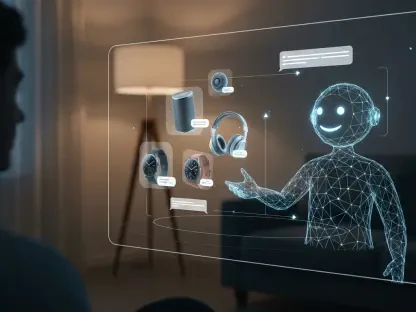The influence of micro-narratives within organizations is an often underappreciated but crucial aspect of leadership and cultural development. These personal stories, frequently conveyed through informal channels like social media or office conversations, are vital in understanding the authentic sentiments of employees. Compared to traditional methods such as surveys, micro-narratives provide an unfiltered glimpse into organizational culture, offering leaders insights that can drive meaningful change.
Unveiling Organizational Truths
Hidden Conversations
Micro-narratives often flourish in the gaps between official communications, revealing the unseen layers of organizational culture. When colleagues share spontaneous stories during casual encounters, these narratives echo the emotional undercurrents that may be neglected or sanitized by formal channels. Unlike structured communications that capture data, micro-narratives reflect raw employee sentiments and experiences that are crucial for understanding the workplace tapestry. Within these interactions lies valuable insight into dynamics and morale which, while not immediately obvious to executives, represent critical touchpoints for gauging genuine cultural atmosphere. Leaders who become attuned to these micro-narratives access a more authentic pulse of the company, allowing them to respond with empathy and informed decisions.
Power of Authentic Messaging
Micro-narratives possess a unique power because they express authenticity where polished corporate messages often fail to resonate deeply. Employees engage with these stories not because they are crafted with strategic finesse but because they reflect lived experiences. Unlike formal communications that may prioritize alignment with brand identity, micro-narratives communicate truths that are perceived as unmediated and genuine. They are immediate, reactive, and often a direct response to everyday organizational life and challenges. Subsequently, they bear an intrinsic connection to morale and performance. Leaders aiming to build engaged and collaborative cultures must listen to, understand, and leverage these narratives because they offer an unfiltered snapshot of how employees actually view and interact with their workplace.
Leveraging Micro-Narratives for Change
Narrative as Change Agents
During structural or policy changes, micro-narratives serve as hidden yet potent agents in shaping employee perceptions and attitudes, either aiding transition or resisting it. These stories, exchanged informally among employees, subtly influence how organizational changes are perceived and integrated within the workforce. The narrative surrounding transitions can either foster acceptance and unity or incite resistance and uncertainty, depending on the direction in which these micro-narratives evolve. While official communications present the strategy behind the change, micro-narratives encapsulate the emotional journey, highlighting how employees interpret and react to these shifts. Leaders skilled in capturing and addressing these narratives can effectively lead change initiatives by aligning them with organizational goals while respecting employee sentiments, encouraging constructive engagement.
Listening as Leadership
Effective leadership involves not just issuing directives but tuning in to the conversations circulating beneath the surface of formal structures. Leaders who prioritize active listening can better grasp the evolving culture by recognizing subtle exchanges among employees. Beyond the boardroom and official memos, these informal dialogues are rich with insights about what employees value and how they perceive ongoing changes. This approach positions leaders not as distant figureheads but as grounded participants attentive to the workforce’s narrative ecosystem. Purposeful listening without judgment allows leaders to influence these narratives positively, steering organizational culture towards alignment with strategic objectives. Engaging with these spontaneous exchanges can fill in communication gaps left by traditional methods, thus creating a clearer understanding of staff responses and needs.
Cultivating Positive Organizational Culture
Strategic Narrative Sculpting
A strategy for cultivating a productive, engaging culture involves creating environments where conversations naturally thrive and authentic micro-narratives can unfold. Leaders play an essential role in facilitating spaces conducive to these organic exchanges, concentrating less on formal, top-down communication and more on nurturing genuine dialogue. Encouraging employees to freely share their experiences and stories helps bridge gaps between corporate values and real-world practice. By understanding and reflecting on these narratives, leaders can strategically steer cultural development, fostering a workplace where employees feel valued and aligned with the company’s mission. This transformative approach, integrating personal stories into the fabric of organizational culture, builds stronger connections and cultivates a sense of shared purpose.
Addressing Negativity
Negative micro-narratives, if left unaddressed, can disrupt organizational harmony and breed a toxic culture that undermines morale and productivity. Tackling these narratives requires authenticity and transparency from leadership, as these are pivotal in reframing harmful stories constructively. Recognizing the underlying emotional core of negative narratives and addressing them with credible solutions can prevent escalation into broader cultural issues. Rather than dismissing or ignoring dissatisfaction, leaders should leverage these narratives as opportunities to reflect, engage in open dialogue, and develop targeted interventions. By understanding the story behind negativity, organizations can foster a culture of support and resilience, turning potential pitfalls into springboards for positive growth and collaboration.
Building Trust and Innovation
Amplifying Success Stories
Leadership benefits greatly from identifying and amplifying positive micro-narratives that spotlight resilience and achievement, bolstering team spirit and motivating employees. Highlighting stories of success serves as encouragement not only for those directly involved but for the broader workforce, enhancing trust in leadership. Amplifying such narratives reinforces the understanding that the organization values accomplishment and dedication, paving the way for a culture that celebrates and builds upon success. Whether acknowledging project milestones or team breakthroughs, these narratives provide emotional touchpoints that inspire others to strive for innovation. Successfully shared micro-narratives can act as cultural beacons, simultaneously celebrating achievements and encouraging continuous improvement.
Fostering Sustainable Culture
The role of micro-narratives in organizations is a critical yet frequently overlooked facet of leadership and cultural growth. These stories, shared primarily through informal avenues like social media platforms or casual office chats, offer a genuine window into employees’ candid feelings and perspectives. While traditional methods like surveys attempt to assess the organizational atmosphere, they often fail to capture the raw, unfiltered emotions and opinions that micro-narratives provide. By tapping into these stories, leaders gain valuable insights into the true pulse of their organizations, enabling them to identify areas where change is necessary or where support is required. This deep understanding can lead to significant improvements in workplace culture, fostering an environment where employees feel heard and valued. Ultimately, the unique capability of micro-narratives to reflect authentic employee experiences empowers leaders to make decisions that resonate and drive impactful, lasting change within the organization.









